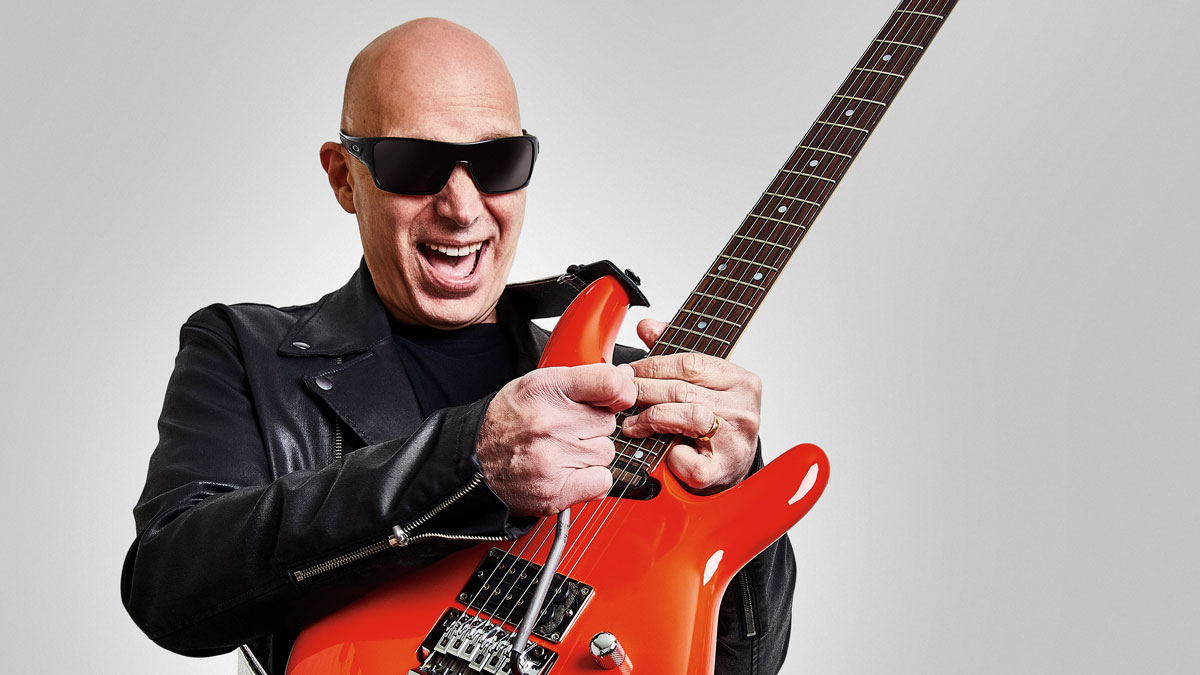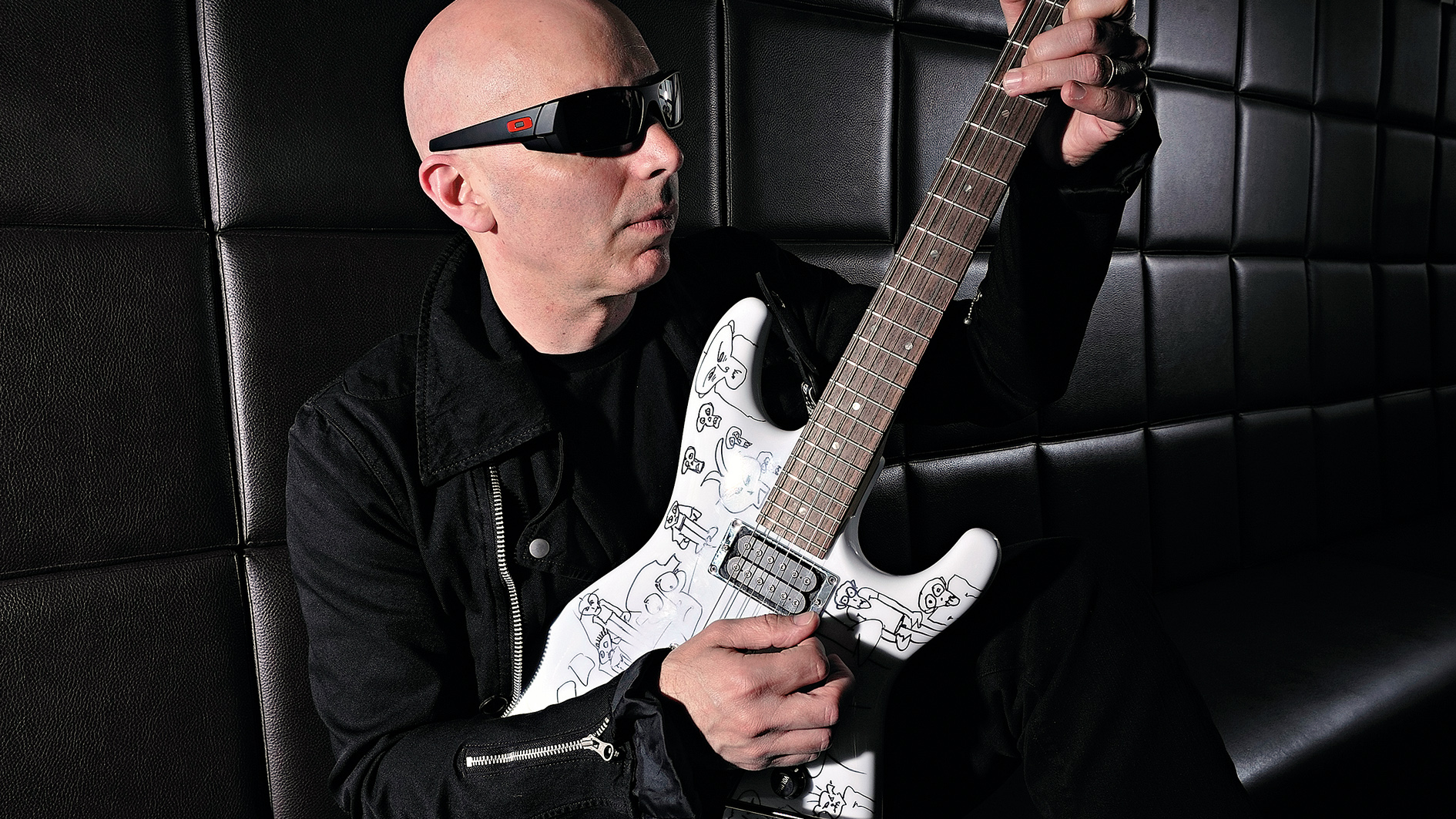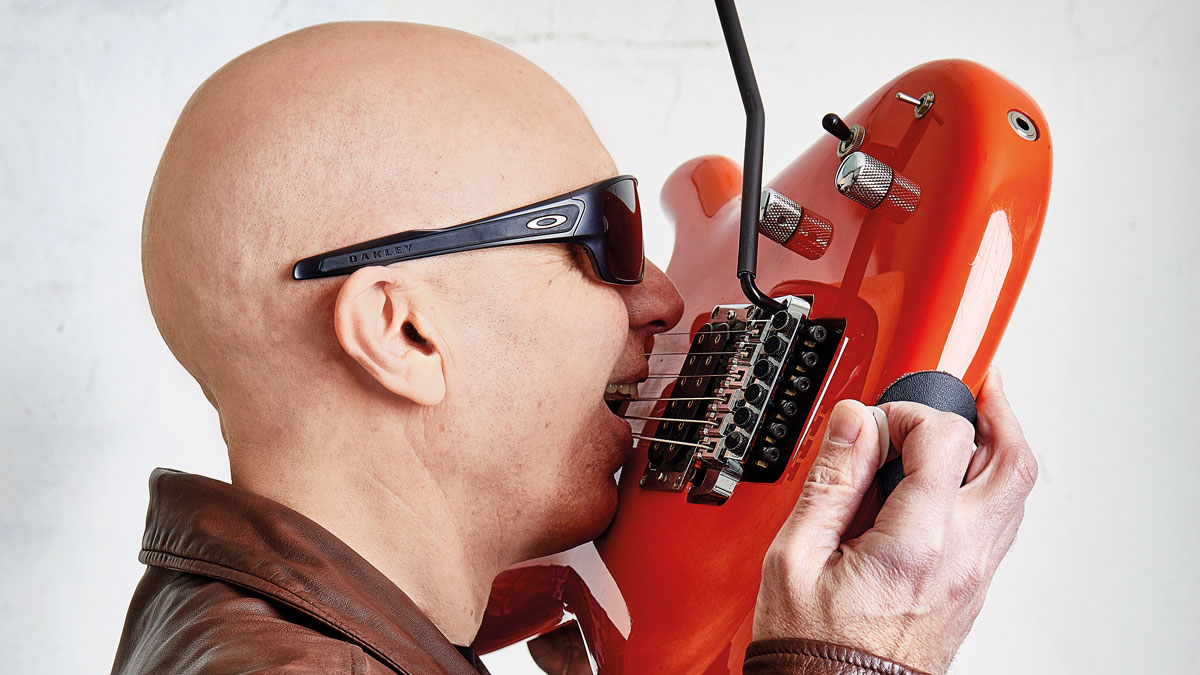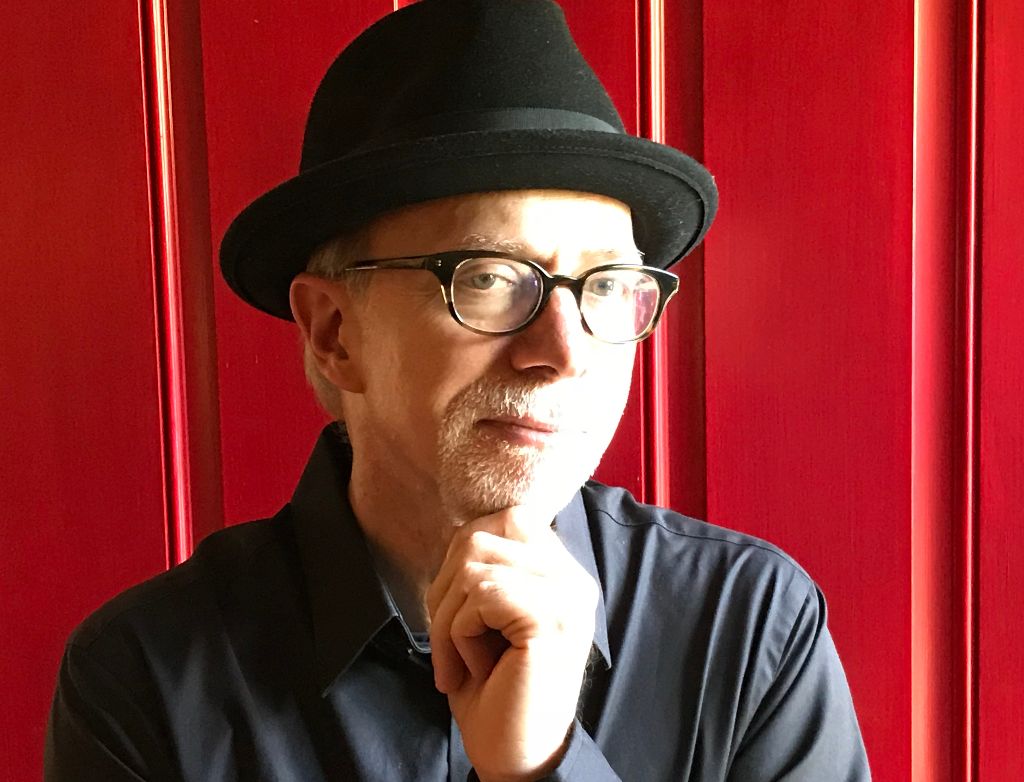Joe Satriani: "Every day there’s something new to learn about the guitar. I don’t know if we’re ever going to figure the thing out!"

When informed that the theme of this issue of GW is '100 things every guitarist should know', Joe Satriani laughs and says, “You should change it to 1,000 things! Every day there’s something new to learn about the guitar. I don’t know if we’re ever going to figure the thing out, and I guess that’s part of the fun.”
Which prompts the question: What does Satriani know about the guitar now that he wishes he knew when he was just starting out? He thinks for a long, thoughtful moment, then offers, “Well, there’s certain technical things about the studio - how when you record a track, something big can wind up sounding small and how something small can wind up sounding big. That’s got a lot to do with microphones, amps and rooms... ”
His voice trails off; he’s clearly dissatisfied with that answer and searching for something deeper. Then he lights up and says, “Here’s something I wish I knew a while ago: how to walk into the studio with more confidence.”
That sounds a little funny coming from Satch, a bravura guitarist with a boatload of classics behind him, but he elaborates: “I always try to go into a recording situation with a plan. And you have to have a plan, because making records is so damn expensive.
"But you have to be prepared to the point where you can respond to whatever comes at you - your drummer might make a funny request, or the engineer might say, ‘Can you play that backwards?’ And you have to fire something back at them that’s as good as anything you came in with. You have to be spontaneous, and that requires confidence, which allows you to change directions on a whim.”
Nobody listening to Satriani’s new album, Shapeshifting, would detect even a smidgeon of uncertainty from its creator. The album contains rowdy rave-ups like Big Distortion, Nineteen Eighty and Spirits, Ghosts and Outlaws that burst with brio and bravado, and even on the record’s quieter moments, tender ballads such as All for Love and Teardrops, his playing is poignant and poetic.
Taken as a whole, the record represents a sort of grand summation of modern guitardom - each epic riff, elastic solo or hallucinatory sonic exploration feels so unbelievably right. But in Satch’s hands - and really, it’s a vision thing - “right” is also a subjective proposition, and when he gets wild and flamboyant here (which is most of the time), he goes off the grid and into another dimension.
All the latest guitar news, interviews, lessons, reviews, deals and more, direct to your inbox!
He makes it all sound so effortless, yet as he explains, no move he makes comes without its share of struggle. “It’s always a struggle,” he notes, “but really, what would be the point if it weren’t? This kind of goes back to the confidence thing: How can I not hold back? Not just holding back physical playing, but the emotions that go into writing. And sometimes that can be uncomfortable.
Take a song like Teardrops, which is about sadness and regret. It was cathartic to write and record, and I know it’ll feel that way to play on stage night after night. But that’s who I am; it’s where I have to go. If you want to do something of worth, yeah, there’s some pain and struggle involved.
PLYRZ Studios is the kind of place where everybody can feel comfortable exploring any idea that comes into their heads
“Not that the sessions were torturous,” he continues. “In fact, we had a blast most of the time.” He describes the rhythm section of bassist Chris Chaney and drummer Kenny Aronoff as “a true dream team - endlessly musical and explosive as hell.”
In fact, it was Aronoff, whom Satch had played with live but never before in the studio, who pointed him toward engineer and co-producer Jim Scott, famous for his work with rock outfits such as Wilco and Tedeschi Trucks Band.
“I got a text from Kenny saying he had a great time working with Jim,” Satriani says, “and that got me thinking, ‘He doesn’t really do my kind of music. Maybe this could be good.’ So I contacted Jim, and he was really positive, and then I went to check out his studio [PLYRZ Recording Studio in Valencia, California], and it had the coolest vibe.
"I thought, ‘This is the kind of place where everybody can feel comfortable exploring any idea that comes into their heads.’ And that’s exactly what happened. I couldn’t be happier with how it turned out.”

- Joe Satriani: "You have to be true to yourself. The internet is a great tool, but it also has the danger of homogenizing everybody"
- Nick Johnston, Lari Basilio and Plini on the genius of Joe Satriani
- Joe Satriani on his greatest used guitar find, Bonamassa-inspired buyer's remorse and why he just can't play SGs
With lyricists, it’s often easy for listeners to trace their evolution by the words they write. It’s a little different with instrumentalists, don’t you think?
"It’s really difficult. I think when we’re finishing a mix and we’re thinking about removing an intro or taking three bars out here or there, that’s kind of like when a singer goes over the lyrics and says, 'I don’t think I need this word' or 'I should say this word twice to make my point.'
"My tools are a little different. I have to be a little bit more overt at times, and other times I have to be very selective. I have to kind of go against what someone might think."
Can you explain that process - how you get more overt or selective?
"It’s one you find by doing: 'Does more or less subtlety make my point?' If my song is about friendship and good times, that’s a little harder than writing a tribute song to Ali Farka Touré and Dick Dale. I mean, I can try to play like them and get my point across, but in a song like All My Friends Are Here, without lyrics, how am I going to make that happen?
I can use key changes and things like that reflect those stories. But it is harder, and I don’t think that I know ahead of time if it’s all going to work
"So in my mind, I always think there is a way to make your guitar sound like it’s celebrating good times and friendship with your best friends, but at the same time I dip into those moments where things get sad or dark - there’s a moment of reflection or remembrance.
"I can use key changes - major to minor, minor to major - and things like that reflect those stories. But it is harder, and I don’t think that I know ahead of time if it’s all going to work.
"During editing and mixing, we’ll sit there and go, 'We thought this part was going to do this, but it’s not. What if we got rid of it?' As you refine, the message can get clearer. We go through options, and we’ll listen to guitar parts through various amps - various Fender Princetons, Deluxes, Bandmasters, Bassmans, Showmans..."
As you’re going through so many sound options, how do you not lose focus of the original idea?
"You can, but the key is to listen to something in context. There’s a song called Falling Stars that has guitar solos that sort of follow each other. Going into it, we knew from the demo that the solos didn’t have a progression of sound - I just plugged in and played to get the stuff down. When we were in the studio, we thought, 'The sounds have to grow. We need different guitars into different amps handing one sound off to the other.'"
That said, do you ever go through this process only to go back to square one?
"Oh, man, there’s always a crazy story about the enormous, wonderful waste of time we go through. The title track is an example of money and time being spent chasing some weird idea. The song started with some weird sound effects; it was my early idea representing shape-shifting - a human turning into something else.
"I really liked the idea, but when we recorded the song it started with Kenny on the drums, which everybody else liked. Then I got the idea to do a guitar solo on the end while the electric piano does a riff, and I literally played, I don’t know, 170 solos in every conceivable style I could come up with. I got so frustrated that I just made a bunch of noise, and Jim stopped - 'That was it!'
"He flipped the part in reverse and it was exactly the shape-shifting thing I was looking for. But you have to go through this stuff. It’s frustrating."
Do you ever think, 'This is just too frustrating. Maybe I’ll just record everybody live in one take?'
What’s special is that every two years or so I get to go into a studio and work with a team to create something that reflects everyone’s talents in all the different areas
"But see, I do that every night. Whenever I play a show, there’s 1,000 phones recording me. I’m making a live album that I can never change or edit right in front of them. To me, there’s nothing special about it. What’s special is that every two years or so I get to go into a studio and work with a team to create something that reflects everyone’s talents in all the different areas of making a record. That’s special."
You’ve worked in the studio with Chris Cheney before, but this is the first time you’ve recorded an album with Kenny. Is that right?
"Yeah, yeah. Kenny and I go back to a Chickenfoot tour. Chad was busy with the Chili Peppers and couldn’t go out with us, and he handpicked Kenny to take his place. We had a blast and became great friends, and then when we did an Experience Hendrix tour together, we really connected on a different level.
"Like me, he loves Mitch Mitchell’s drumming and the expressiveness he brought to Jimi Hendrix’s first three records. That’s what I wanted for this record; I wanted the songs to explode, and I knew Kenny could get into that. Kenny makes a sound that’s utterly amazing. You can’t believe it; you just have to be in a room to experience it. And let me tell you, Jim Scott recording Kenny Aronoff is a beautiful thing."

Certain tracks - Big Distortion, Nineteen Eighty, All My Friends Are Here - have a nostalgic quality to them. They sound like radio rock of the '70s and '80s, but not in a kitschy kind of way.
"That’s a good observation. I guess there was some reflection going on there. I didn’t start the project thinking that I was walking down memory lane or something like that. But you can’t really go against what’s happening once you open the floodgates of your emotional creativity.
"I think everybody tapped into that. When I would explain the song to the guys, it would click somehow with them. They could relate to it, and then they would have so much more to offer during the tracking. The sounds I was going for, and everybody’s performances of the songs, kind of fell in line."
Big Distortion, in particular, sounds in a lot of ways like really early glam rock - Slade, The Sweet, Suzi Quatro, even - but of course it also sounds a little bit like the Black Keys.
You can’t really go against what’s happening once you open the floodgates of your emotional creativity
"Sure, that works. It’s funny - you have a riff that has to sound evil or threatening, so of course you think of the minor scale. But I always take a moment to go, “You know, the major scale has some stuff going for it, too…
"So the riff that starts the song is one not usually used for that kind of a thing, and that’s what I think you picked up on. It does have a sort of a glam-rock thing - T. Rex and early Bowie. I really love that stuff. I played it in my high school bands. I love the experience of playing those big glam-rock riffs that aren’t evil. They’re celebratory."
All for Love is a truly beautiful track. Is it different for you to write a love song now as opposed to when you were in your 20s?
"It would have to be, but I’m not going to discriminate against that. I’m going to firmly believe that somebody experiencing something for the first time is just as valid as someone who’s gone through it a million times.
"And I think it’s dangerous to believe that just because you’re old that you know a thing or two. Some people don’t get older and wiser, you know? I wrote that song as an orchestral piece in the late '90s, and I put it on a CD of music I made and gave to John Paul Jones. And then I forgot all about it.
"After a while, I started listening to it, and I thought, 'You know, I might be able to play this on guitar...' And I made a new session using the original keyboard performance, and that’s what’s on the record. The journey of that song was really long, and part of the emotion of getting it recorded was part of that journey."
On Yesterday’s Yesterday you play some banjo…
"Yeah. I’m not a banjo player, but it’s got strings and frets. I loved the idea of doing something acoustic, but I knew that people would be like, 'What is this doing on Joe’s album?' Even so, it made sense to me - the theme and title of the album. So I played the melody on an old six-string banjo Deering had made for me.
"I hadn’t picked it up in a while; when I pulled it out of the case, the tuning key for the sixth string had broken completely off."
And, of course, you also have Nigel Tufnel on mandolin.
I’ve always listened to reggae, especially in the '70s when Bob Marley and the Wailers became really popular
"[Laughs] That’s right - Christopher Guest. I wanted a mandolin on the song, and I thought, 'Hey, maybe he’ll do this for me.' I sent him the track, and bless his heart, he said yes. He whipped something out really fast and gave us a couple of performances. And then Lisa Coleman came in and played piano over it. It was a fun song to mix because we had a lot of options."
Here the Blue River has a reggae rhythm to it. Where does that influence come from?
"I’ve always listened to reggae, especially in the '70s when Bob Marley and the Wailers became really popular. It became a really wonderful, exotic musical destination to go to - something so foreign from what I grew up on.
"I didn’t start the record thinking, 'I’ve got to have a reggae song,' but I read this poem, The River by [Ralph Waldo] Emerson, and it got me thinking about what the river would mean to somebody as a point of reflection of one’s life and powerful memories. That guided me toward the pace of the song; it was reggae on the demo, but it became more authentic reggae when everybody else chimed in."

Guitar- and gear-wise, did anything completely new enter your world on this record?
"I’ve been clearing out a lot of old gear, but I’ve been using a few things that surprised me. All the new Fender amps are really great: the Princetons, the Deluxes - the ’68 Custom versions of those amps all ended up being extremely useful. Of course, my signature [Marshall] JVM head and my old 5150 still got used the most.
One pedal I really did enjoy this time around was the TC Electronic Sub ‘N’ Up [octaver]. That’s the sound of Big Distortion. It was very inspirational, because I’d been looking for a pedal that would really do one octave up, one octave down, but comfortably and more guitar-like.
"And that was the first time, right out of the box, where I plugged it in and said, 'Oh, that’s what a guitar player wants' - not all this other stuff that comes along with harmonizer pedals. This was so simple. You just step on it and there it is.
Having one sound from one guitar and one amp over 13 songs doesn’t cut it for me
"Guitar-wise, my chrome JS [Ibanez JS1CR Chrome Boy] got used the most, but then there are the flavor guitars - a Tele, a Les Paul or an ES-335. They all blend together really well, which confirms the need to try out all those options. Having one sound from one guitar and one amp over 13 songs doesn’t cut it for me. I want to have a lot of spices, a lot of flavors, and I want to work with a different canvas each time I start a song."
At this stage in your career, would you ever consider joining another band or even playing guitar for a solo artist, like you did years ago with Mick Jagger?
"I think so, especially after letting a new album set sail. Sure, I could do something else. Of course, a label would say, 'No, no. You’ve got to go out and promote this album.' But it’s so typical for an artist to think, 'OK, now I want to do something entirely different' right after the completion of a project. I guess that’s the way we are.
"Let’s just put it this way: At the right time, sure. And with the right offer from the right band, that would be fun. It would be liberating and a new avenue of expression that I think I would enjoy."
Joe is a freelance journalist who has, over the past few decades, interviewed hundreds of guitarists for Guitar World, Guitar Player, MusicRadar and Classic Rock. He is also a former editor of Guitar World, contributing writer for Guitar Aficionado and VP of A&R for Island Records. He’s an enthusiastic guitarist, but he’s nowhere near the likes of the people he interviews. Surprisingly, his skills are more suited to the drums. If you need a drummer for your Beatles tribute band, look him up.

